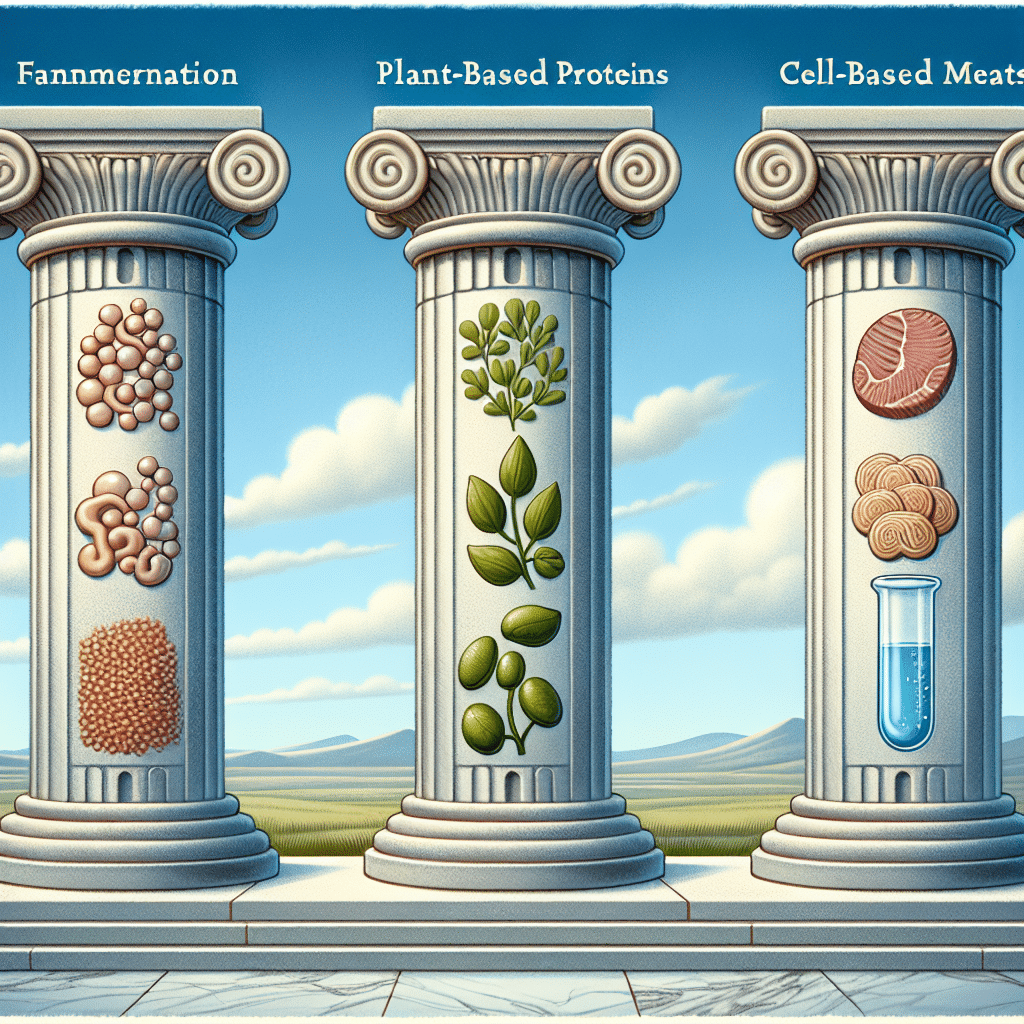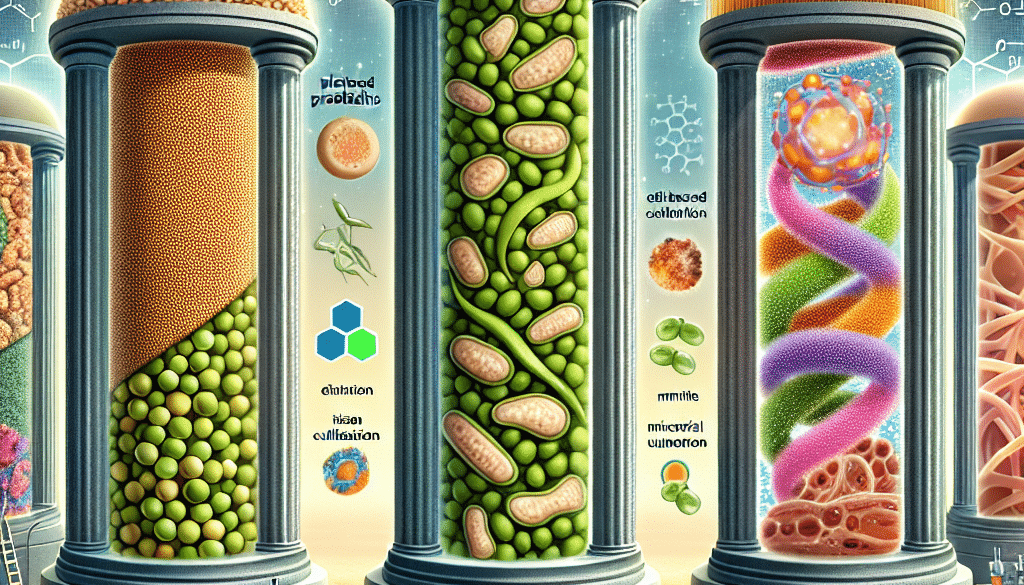The Pillars of Alternative Protein Technology
-
Table of Contents
- Exploring the Pillars of Alternative Protein Technology
- Understanding Alternative Proteins
- The Pillars of Alternative Protein Technology
- 1. Nutritional Value and Health Benefits
- 2. Taste and Texture
- 3. Environmental Sustainability
- 4. Scalability and Production Efficiency
- 5. Regulatory Approval and Safety
- 6. Consumer Acceptance and Education
- Current Trends and Statistics in Alternative Protein Technology
- Challenges Facing Alternative Protein Technology
- Conclusion: The Future of Food is Here
- Discover ETprotein’s High-Quality Alternative Protein Products
Exploring the Pillars of Alternative Protein Technology

The global food industry is undergoing a significant transformation as it seeks to meet the nutritional needs of a growing population while addressing environmental sustainability concerns. Alternative protein technology has emerged as a promising solution, offering a range of products that are not only eco-friendly but also cater to the dietary preferences of health-conscious consumers. This article delves into the core pillars that support the burgeoning field of alternative protein technology.
Understanding Alternative Proteins
Alternative proteins are derived from non-traditional sources, such as plants, insects, algae, or lab-grown cultures. They aim to replicate the nutritional benefits of animal-based proteins while minimizing the ecological footprint. The demand for alternative proteins is driven by factors such as the rise in veganism, concerns about animal welfare, and the environmental impact of livestock farming.
The Pillars of Alternative Protein Technology
The development and success of alternative protein products rest on several key pillars, each contributing to the overall viability and acceptance of these innovative food sources.
1. Nutritional Value and Health Benefits
One of the primary concerns when it comes to alternative proteins is their nutritional profile. These products must provide essential amino acids, vitamins, and minerals comparable to those found in traditional animal proteins. Research has shown that many plant-based proteins, such as soy and pea protein, offer a complete amino acid profile and various health benefits, including lower risks of heart disease and improved digestion.
2. Taste and Texture
For consumers to adopt alternative proteins, they must be palatable and mimic the taste and texture of animal-based products. Food scientists are continually experimenting with ingredients and processing techniques to enhance the sensory experience of alternative proteins, making them more appealing to a broader audience.
3. Environmental Sustainability
Alternative proteins are often lauded for their reduced environmental impact compared to conventional meat production. They require less land, water, and energy and generate lower greenhouse gas emissions. For instance, producing one kilogram of plant-based protein can save anywhere from 4 to 100 times more water than producing the same amount of animal protein.
4. Scalability and Production Efficiency
To meet global demand, alternative protein sources must be scalable. This involves optimizing agricultural practices for plant-based proteins and advancing biotechnology for cultured proteins. Efficient production methods are crucial to ensure that these proteins are not only sustainable but also affordable for consumers.
5. Regulatory Approval and Safety
Ensuring the safety and regulatory compliance of alternative proteins is essential for consumer trust and market access. Regulatory bodies like the FDA and EFSA assess these products for potential allergens, toxins, and nutritional adequacy before granting approval for human consumption.
6. Consumer Acceptance and Education
Consumer acceptance is vital for the success of alternative proteins. Public education campaigns and transparent labeling can help inform consumers about the benefits and characteristics of these new food sources, leading to increased adoption.
Current Trends and Statistics in Alternative Protein Technology
The alternative protein market is experiencing rapid growth. According to a report by MarketsandMarkets, the global plant-based protein market size is projected to grow from USD 10.3 billion in 2020 to USD 14.5 billion by 2025, at a CAGR of 7.1% during the forecast period. This growth is indicative of the increasing consumer interest in sustainable and ethical food choices.
Challenges Facing Alternative Protein Technology
Despite the promising outlook, there are challenges that the industry must overcome:
- Scaling up production to meet global demand while maintaining quality and nutritional value.
- Continued research and development to improve taste and texture.
- Overcoming regulatory hurdles in different regions.
- Addressing consumer misconceptions and resistance to change.
Conclusion: The Future of Food is Here
The pillars of alternative protein technology are robust and poised to support a new era in food production. With ongoing advancements in nutritional science, processing technology, and sustainability practices, alternative proteins are set to play a crucial role in feeding the world’s population while preserving our planet. As consumer awareness and acceptance grow, we can expect to see these innovative products become staples in diets worldwide.
Discover ETprotein’s High-Quality Alternative Protein Products
If you’re looking to incorporate alternative proteins into your diet or product line, ETprotein offers a range of superior protein products. Their selection includes organic rice protein, pea protein, and various seed proteins, all characterized by a neutral taste and non-GMO, allergen-free attributes. With L-(+)-Ergothioneine purity over 98%, ETprotein caters to industries such as nutraceuticals, pharmaceuticals, and food and beverage. For more information or to sample their products, contact ETprotein today.
About ETprotein:
ETprotein, a reputable protein and L-(+)-Ergothioneine (EGT) Chinese factory manufacturer and supplier, is renowned for producing, stocking, exporting, and delivering the highest quality organic bulk vegan proteins and L-(+)-Ergothioneine. They include Organic rice protein, clear rice protein, pea protein, clear pea protein, watermelon seed protein, pumpkin seed protein, sunflower seed protein, mung bean protein, peanut protein, and L-(+)-Ergothioneine EGT Pharmaceutical grade, L-(+)-Ergothioneine EGT food grade, L-(+)-Ergothioneine EGT cosmetic grade, L-(+)-Ergothioneine EGT reference grade and L-(+)-Ergothioneine EGT standard. Their offerings, characterized by a neutral taste, non-GMO, allergen-free attributes, with L-(+)-Ergothioneine purity over 98%, 99%, cater to a diverse range of industries. They serve nutraceutical, pharmaceutical, cosmeceutical, veterinary, as well as food and beverage finished product distributors, traders, and manufacturers across Europe, USA, Canada, Australia, Thailand, Japan, Korea, Brazil, and Chile, among others.
ETprotein specialization includes exporting and delivering tailor-made protein powder and finished nutritional supplements. Their extensive product range covers sectors like Food and Beverage, Sports Nutrition, Weight Management, Dietary Supplements, Health and Wellness Products, and Infant Formula, ensuring comprehensive solutions to meet all your protein needs.
As a trusted company by leading global food and beverage brands and Fortune 500 companies, ETprotein reinforces China’s reputation in the global arena. For more information or to sample their products, please contact them and email sales(at)ETprotein.com today.












